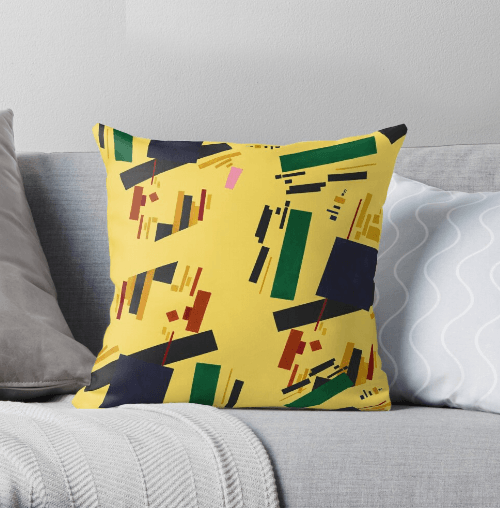Constructivism is a revolutionary art movement that originated in Russia in the early 20th century, right after the Russian Revolution. It’s a term that captures an entirely new approach to art and architecture, distinguished by its devotion to modernity, functionality, and the embrace of technology and industrial materials. Constructivism marks a bold departure from the art for art’s sake philosophy, advocating instead for art as a practice for social purposes.
At the heart of Constructivism lies the idea that the artwork should reflect the modern industrial world. Unlike preceding artistic movements that focused on the aesthetic and the beautiful, Constructivism was deeply intertwined with the political and social fabric of its time, aiming to create works that were not only innovative but also utilitarian. It was a movement driven by the belief that art should have a practical function in society, contributing to the construction of a new Socialist system.

Constructivist artists and architects believed in the power of materials like steel, glass, and concrete to express ideas of transparency, efficiency, and social change. They experimented with abstract geometric forms, dynamic compositions, and the integration of text to engage the viewer in a more active and intellectual manner. The movement’s pioneers, such as Aleksandr Rodchenko, El Lissitzky, and Vladimir Tatlin, envisioned art as a collaborative force that could help build a new society.
Constructivism significantly influenced architecture, with designs that emphasized functionality and the rational use of space. Constructivist buildings are known for their innovative use of materials, structural experimentation, and the absence of unnecessary ornament, reflecting the movement’s ethos of practicality and efficiency. This architectural style was seen as a way to create environments that would foster the development of the ideal socialist citizen, embodying the utopian aspirations of the time.

The impact of Constructivism extended beyond Russia, influencing art, graphic design, and architecture worldwide. It laid the groundwork for later movements such as BauhausThe Bauhaus movement originated as a German school of the arts in the early 20th century. Founded by German architect Walter Gropius in 1919, the school was dedicated to uniting all branches of the arts under one roof. The Bauhaus acted as a hub for Europe's most experimental creatives, with well-known artist instructors like Wassily Kandinsky, Josef Albers, and Paul More in Germany and De Stijl in the Netherlands, which shared Constructivism’s fascination with industrial materials, geometric abstraction, and the integration of art and life.
Constructivism’s legacy is its radical reimagining of the role of the artist and the architect in society. It challenged the traditional notion of the artwork as a unique object of contemplation, proposing instead that art should be directly involved in the everyday life and the political struggles of the time. Through its bold exploration of new materials, forms, and functions, Constructivism continues to inspire designers, architects, and artists who seek to merge aesthetic innovation with social engagement.

